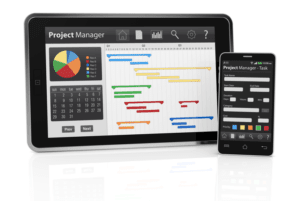The Reserve for Obsolete Inventory #225 18 januari 2024 – Posted in: Bookkeeping

Safety stock and cycle stock are essential concepts when it comes to replenishment models. Here, by replenishment models, we mean an approach where you set target safety stocks and order quantities, along with a re-order level. In replenishment models, you need to calculate target safety stock to handle expected variability in demand up to a defined service level. In general, replenishment is an underutilised resource, since many people find variability a difficult concept to factor in well. Fortunately, given the data challenge involved, tools exist to calculate these parameters for you.
![]()
Managerial turnover: a challenge for the supply chain

Write-downs and write-offs are accounting entries used to adjust inventory values on a company’s balance sheet when inventory becomes obsolete or its market value declines below its original obsolete inventory reserve cost. A write-down involves reducing the carrying amount of inventory by debiting an expense account (such as Cost of Goods Sold) and crediting a contra asset account like Allowance for Obsolete Inventory. Write-offs imply expensing the entire loss, which is more severe than a write-down since it permanently removes the inventory from the company’s books. Obtaining accurate financial statements is vital to the success of any business operation, as it provides important information on the company’s financial health and performance.
Understanding Is 401k Account Securities Account Options
All information published on this website is provided in good faith and for general use only. Any action you take based on the information found on cgaa.org is strictly at your discretion. CGAA will not be liable for any losses and/or damages incurred with the use of the information provided. Qbox allows you to make changes to your provisions and use the locking and syncing feature to ensure that no other user can tamper with those changes. You can record your estimated provisions on QuickBooks, or Microsoft’s Excel, Word, PowerPoint, or Access files and share them with invited users very easily.
Obsolete inventory management
- Obtaining accurate financial statements is vital to the success of any business operation, as it provides important information on the company’s financial health and performance.
- When an obsolete item is disposed of, the related amount in the inventory asset account and the contra asset account are removed from the financial statements through a disposal journal entry.
- Make sure your team is properly trained on how to forecast inventory so that stock levels can be easily maintained and won’t end up causing a loss down the line.
- The percentage should be tracked on a trend line and compared to the results of similar businesses, to see if a company is experiencing an unusually large proportion of inventory problems.
- The limitations of the technology do not mean you shouldn’t use it, they just mean you should seek to understand those limitations and work with them.
The point is that if you drop safety stocks by 50% and that is too much, https://www.bookstime.com/ you will end up with shortages. This will damage the credibility of you, the tools, and any further optimization initiatives. It is much better to try reducing safety stocks by, say, 20% at first, watching what happens carefully, and then reducing them further. Techniques like single minute exchange of die (SMED) drive down the cost of production setups. Procurement efficiencies, such as the use of automated purchasing tools, make it less costly to reorder.

Poor inventory management

For example, in the high fashion and technology markets, tastes change quickly, with new products continuously replacing older models. Goods with a short shelf-life are also at higher risk of degradation and swiftly reaching obsolescence. Whereas in sectors with long-lasting machinery, for example boilers or cars, service parts may not become obsolete for many years. An inventory reserve is an asset contra account that is used to write down the value of inventory.
Understanding Inventory Provision Accounting Principles and Challenges

E&O are subject to a financial review at least annually, or quarterly in particular for listed companies. However, the methods used to calculate and account for the reserve can vary from company to company. By recognizing the sale proceeds, the company can remove the obsolete inventory from their books and lower the value of the inventory asset on their balance sheet. However, this might still result in a loss due to the difference between the cost and sales revenue. The company still owns the inventory on the balance sheet, so the inventory reserve will be used to net off when bookkeeping actual loss incurs in the future.
How to Manage Obsolete Inventory: Costs, Causes & Smart Disposal Tactics
On 31 Mar 202X, management needs to record inventory write-down expenses based on the management estimation. ABC need to debit inventory write down $ 5,000 and credit inventory reserve $ 5,000. Inventory write-off expenses should be recorded within the time that the company holds inventory.
- Changes in reserves alter the cost of goods sold (COGS), which in turn impacts gross profit and net income.
- Understand inventory reserves in accounting, their calculation, presentation, adjustments, and tax implications for accurate financial reporting.
- After this entry, Inventory balance equal to 480,000 (500,000 – 2,000) less 3,000 (5,000 – 2,000) which is 450,000.
- The lower boundary, called the floor, is in place to remove the opportunity for a company to unrealistically overstate profit by understating the value of its inventoried assets.
- Slow-moving inventory can also be called Excess Inventory, Aged Inventory, or Leftover Inventory.
- The business is now concerned that there may be some inventory shrinkage due to theft or damage.
- With the advent of technology and improved forecasting techniques, businesses could better anticipate demand patterns, reducing the need for excessive inventory buffers.
Obsolete Inventory Allowance
Obsolete inventory significantly impacts a business’s finances, as it loses 100% of its value or more (costs of destroying goods also have to be taken into account). When the inventory write-down is small, companies usually charge the cost of goods sold account. However, when the write-down is large, it is better to charge the expense to a separate account.
